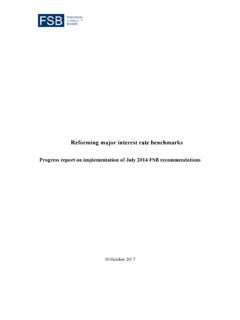Transcription of Implementation of New York’s Close to Home …
1 Implementation OF NEW york S Close TO HOME INITIATIVE: A NEW MODEL FOR YOUTH JUSTICE February 2018 The Center for Children s Law and Policy Implementation of New york s Close to Home Initiative: A New Model for Youth Justice Page 1 FOREWORD In 2010, the Annie E. Casey Foundation was approached by the Commissioners of the New york City Administration for Children s Services (ACS) and the Department of Probation (DOP) to assist the City as it sought to cement and further advance reforms to its juvenile justice system. Over the next few years, we had a front row seat as ACS, DOP, and other City agencies and community stakeholders pushed for passage of the Close to Home legislation and began to plan for its Implementation .
2 As such, we are pleased to be able to support the Center for Children s Law and Policy s report on the Implementation of Close to Home by ACS. While the circumstances that drove the push for Close to Home s passage were unique to New york , the City s efforts to reduce the use of out-of-home placement, expand its continuum of community-based alternatives, and introduce an array of residential placements that were small and near the homes of its youth, had significance well beyond the Empire State. New york City has been at the forefront of what we should all hope is a new wave of youth justice transformation.
3 Virtually every state has reduced its use of confinement since the turn of the century, but Close to Home aspired for more. It sought to ensure that virtually all young people even those who were deemed to require non-secure or limited secure placement would be cared for near their home communities in smaller facilities that serve as a direct contrast to the prison-like facilities that were housing youth hundreds of miles from New york City. From the outset, it was clear that successful Implementation of Close to Home would require a tremendous lift from ACS, which would be reinventing itself on the fly and at a rapid pace.
4 Having experienced the early days of Close to Home planning and Implementation up Close , it is hard to understate how big of a challenge this was, given the timeline that was set under the Close to Home agreement. That ACS efforts have come so far in such a short period of time is a testament to the vision and persistence of the agency s leadership and staff. While there is surely still a long way to go, we hope that other jurisdictions will learn from New york City s experience - that bold ideas like Close to Home, ideas that raise expectations for how the juvenile justice system works with all youth are worth pursuing.
5 Nate Balis Director, Juvenile Justice Strategy Group Annie E. Casey Foundation Implementation of New york s Close to Home Initiative: A New Model for Youth Justice Page 2 TABLE OF CONTENTS FOREWORD 1 TABLE OF CONTENTS 2 INTRODUCTION 3 METHODOLOGY 3 THE NEED FOR Close TO HOME: A FAILED JUVENILE JUSTICE MODEL IN NEW york 4 LAYING THE GROUNDWORK FOR Close TO HOME IN NEW york 6 THE NATIONAL CONTEXT FOR Close TO HOME 8 PHILOSOPHY AND CORE PRINCIPLES OF Close TO HOME 9 Close TO HOME S CITY-STATE COST-SHARING PARTNERSHIP 10 OVERARCHING FRAMEWORK FOR Implementation OF Close TO HOME 10 RISK-NEEDS-RESPONSIVITY 10 POSITIVE YOUTH DEVELOPMENT 11 CORE PRINCIPLES OF Close TO HOME 11 CHALLENGES IN IMPLEMENTING Close TO HOME 13 Close TO HOME S ACHIEVEMENTS 15 FULFILLING THE VISION 16 MEETING THE CHALLENGES 16 IMPLEMENTING THE SEVEN CORE PRINCIPLES OF Close TO HOME 17 1.
6 PUBLIC SAFETY 17 2. ACCOUNTABILITY 19 3. EVIDENCE-BASED AND EVIDENCE-INFORMED TREATMENT 20 4. EDUCATIONAL CONTINUITY AND ACHIEVEMENT 21 5. COMMUNITY REINTEGRATION 22 6. FAMILY ENGAGEMENT AND COLLABORATION 23 7. PERMANENCY 23 SUSTAINING AND STRENGTHENING Close TO HOME IN THE FUTURE 24 OPPORTUNITIES FOR IMPROVEMENT 24 LESSONS FOR OTHER JURISDICTIONS 26 CONCLUSION 28 Suggested citation: Jason Szanyi and Mark Soler, Implementation of New york s Close To Home Initiative: A New Model For Youth Justice, Center for Children's Law and Policy (February 2018). Cover photo credit: Leake & Watts Services, Inc. Implementation of New york s Close to Home Initiative: A New Model for Youth Justice Page 3 INTRODUCTION In 2012, the New york State Legislature and Governor Andrew Cuomo authorized a landmark initiative known as Close to Home, which was designed to align New york State and New york City s juvenile justice system with research and nationally-recognized approaches to working with young people charged with crimes.
7 In five years, the Close to Home Initiative has transformed the experience of youth who come into contact with the justice system in New york City. By shifting focus away from incarcerating youth in large, dangerous, geographically remote institutions, Close to Home has sent an important message: it is far wiser to keep youth in their communities and near their families, since those connections hold the greatest potential to help youth build new skills and stay out of trouble in the long term. Methodology This is a report on why and how Close to Home began, the challenges it faced, the principles on which it is based, and what it has accomplished.
8 The Center for Children s Law and Policy (CCLP) prepared this report , which was written by Executive Director Mark Soler and Deputy Director Jason Szanyi, at the request of the New york City Administration for Children s Services (ACS). CCLP is a nonprofit national public interest law and policy organization focused on reform of juvenile justice and other systems impacting troubled and at-risk youth. CCLP has assisted jurisdictions in over 30 states with efforts to improve their youth justice systems, and CCLP staff have conducted dozens of assessments of policies and practices in juvenile justice systems throughout the country.
9 This report is an assessment of ACS s Implementation of Close to Home. It is not an assessment of Implementation by the state Office of Children and Family Services or by city agencies such as the Department of Probation and Department of Education, although it certainly reflects their efforts. The report also is not a formal scientific evaluation of the Close to Home initiative. Instead, the report focuses on Implementation of Close to Home as envisioned by the implementing legislation and ACS s proposed plans. CCLP drew upon four primary sources of information when preparing this report : Document review: CCLP reviewed a variety of documents to obtain context for the development of Close to Home and to frame interviews with stakeholders.
10 These documents included planning documents prepared by ACS, ACS policies and procedure manuals, reports produced by other partner agencies, and other publications and news coverage related to the Implementation of Close to Home. Interviews: CCLP conducted in-person and telephone interviews with over 40 stakeholders, including current and former ACS staff members and officials at the Department of Probation, the Department of Education, the Law Department, the Legal Aid Society, the Children s Defense Fund, and Close to Home service providers. Implementation of New york s Close to Home Initiative: A New Model for Youth Justice Page 4 Site Visits: CCLP staff made on-site visits to one Non-Secure Placement program, one Limited-Secure Placement program, and one New york City Department of Education school that youth from Non-Secure Placement facilities attend.









